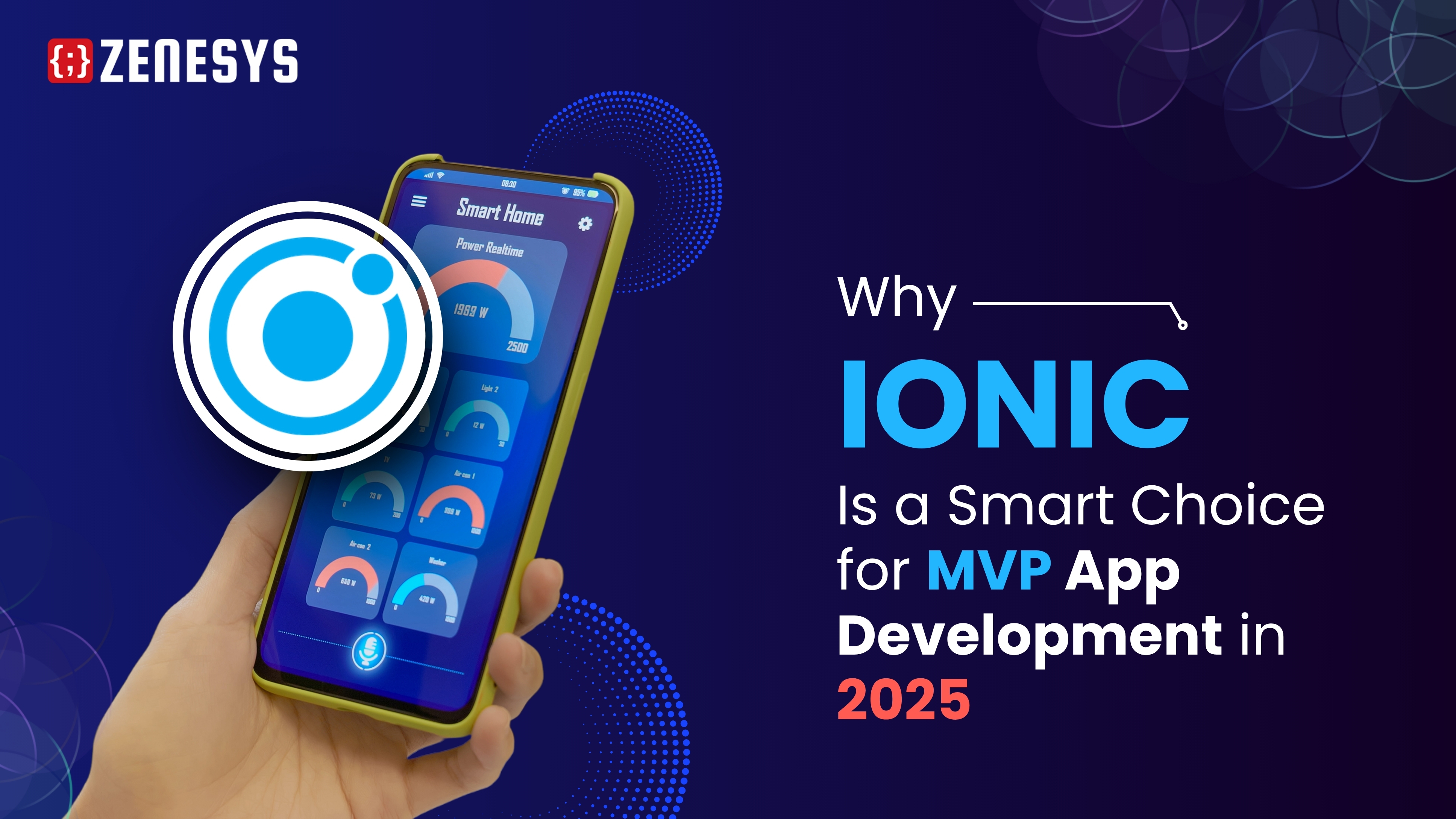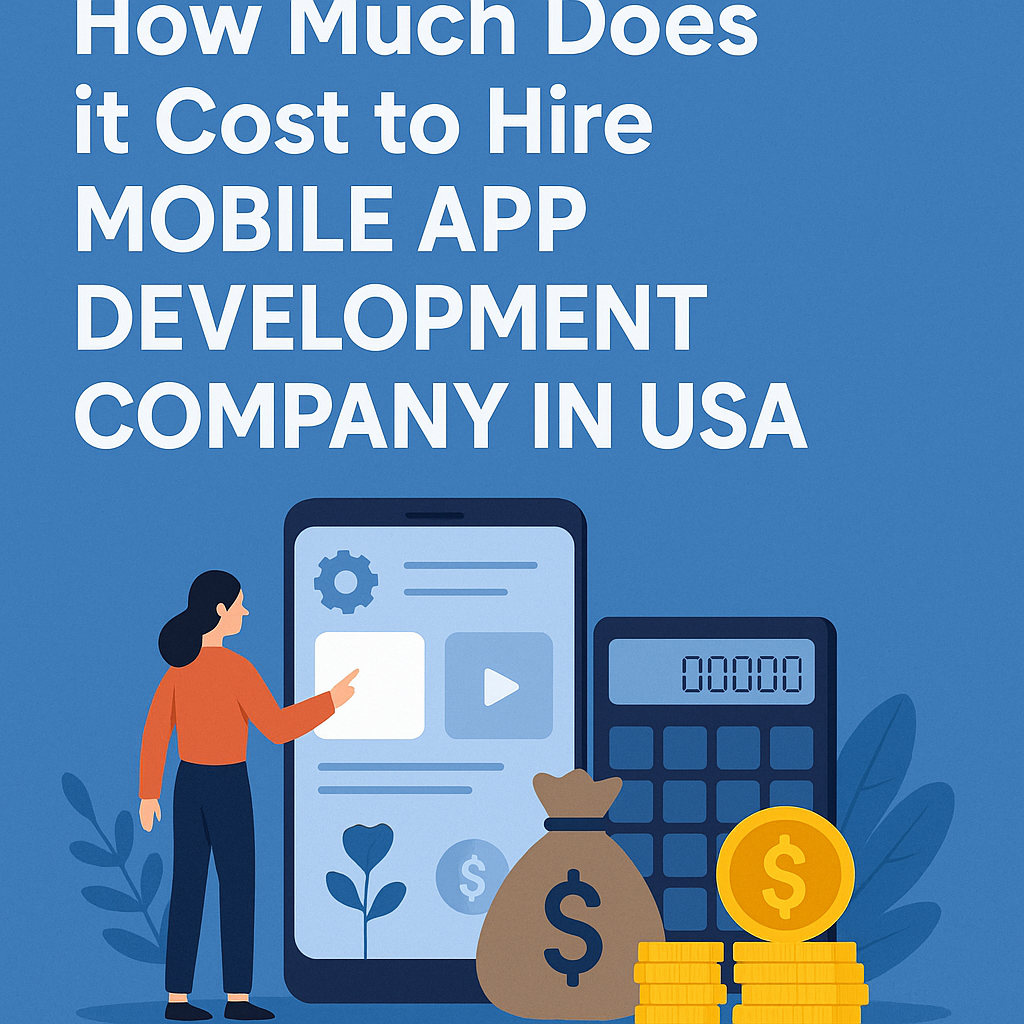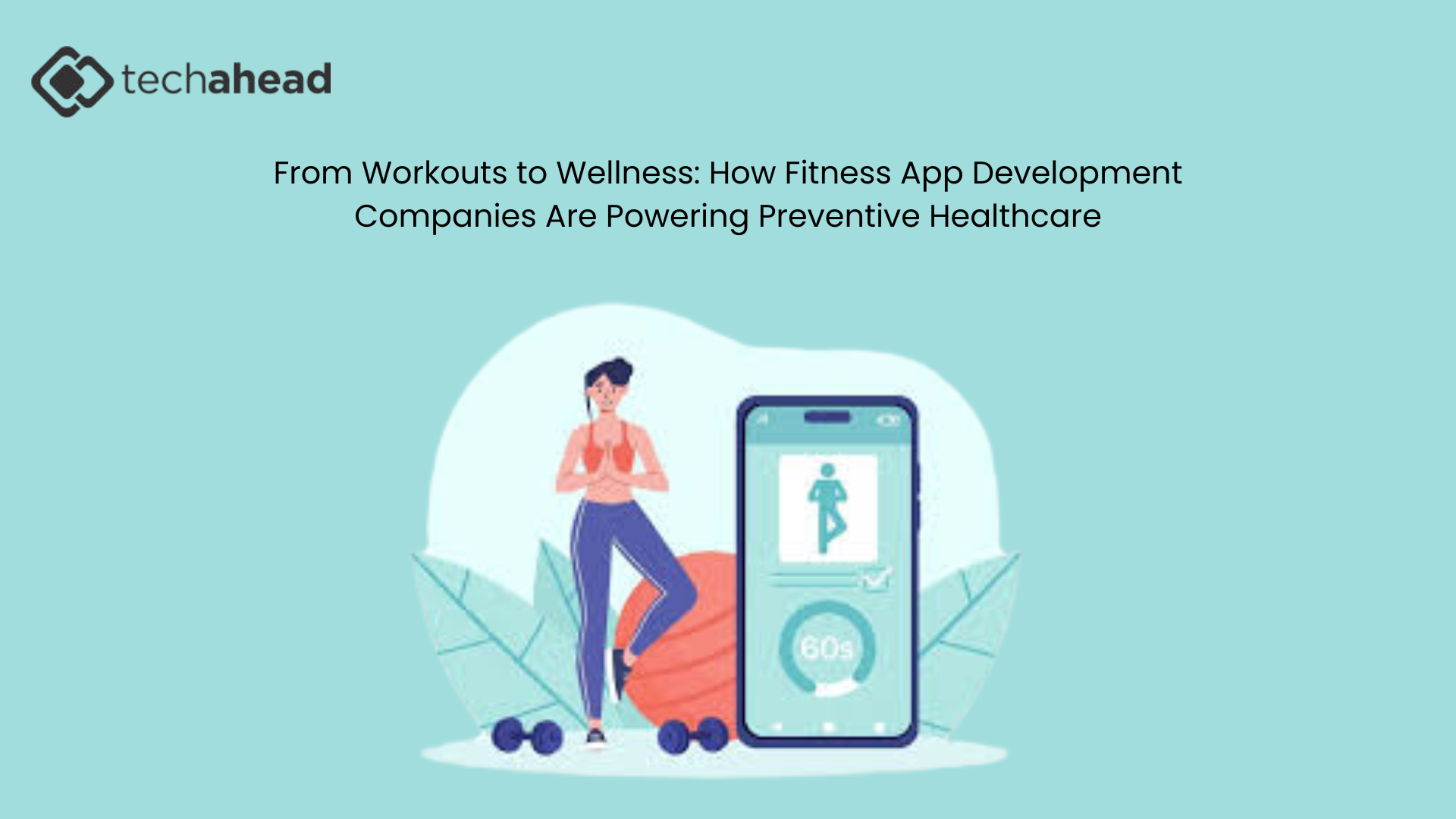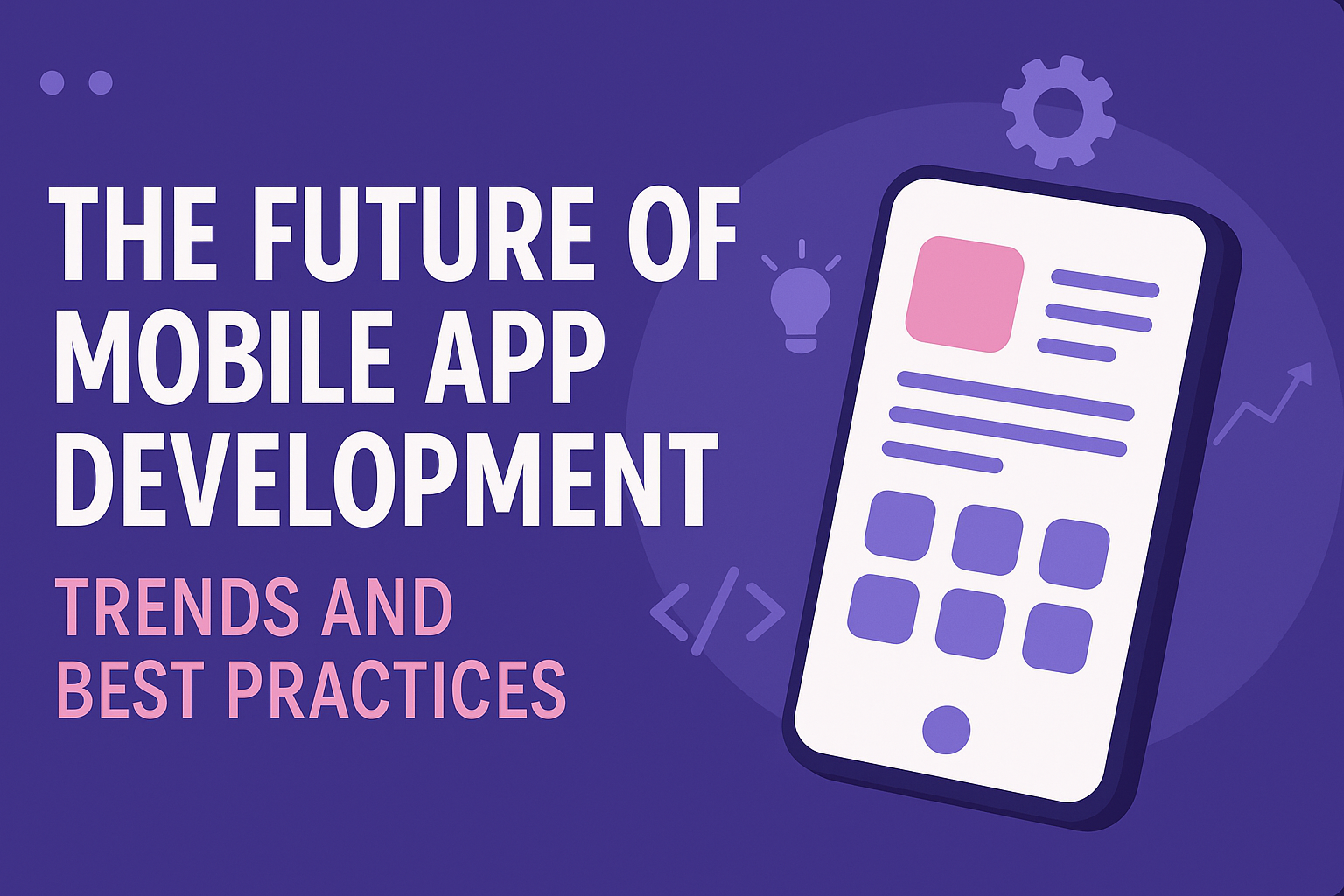Why Ionic Is a Smart Choice for MVP App Development in 2025

Strong 8k brings an ultra-HD IPTV experience to your living room and your pocket.
Let’s start with a simple question: Why do businesses, from scrappy startups to established brands, keep talking about MVPs (Minimum Viable Products)? It’s because launching fast, learning early, and saving money are more important than ever.
✍️ Voice technology is revolutionizing apps. Learn how voice-enabled assistants are integrated into app development projects worldwide.
According to a 2024 Statista report, over 70% of tech startups believe that releasing an MVP quickly is the key to long-term success.
But here’s the tricky part: How do you build an MVP that works on both iOS and Android, looks great, and doesn’t break the bank? That’s where Ionic comes in.
As one developer put it, “Ionic lets you build once and launch everywhere. For a small team, that’s a lifesaver.” In my experience, Ionic isn’t just another tool-it’s a practical solution for teams who want to move fast without sacrificing quality.
Let’s break down why Ionic stands out in 2025, especially for MVP app development, with real-world insights, data, and a conversational tone that skips the jargon.
What Is Ionic? Setting the Scene
Ionic is a mobile app framework that’s been around since 2013. It started as an Angular-based project but has grown to support React, Vue, and plain JavaScript. The core idea is simple: build cross-platform apps using web technologies like HTML, CSS, and JavaScript, and run them inside a native wrapper using something called WebView.
Think of Ionic as a bridge between web and mobile. You get the speed and flexibility of web development, but your app behaves like a native mobile app.
And here’s a fun fact: In 2025, Ionic’s tagline is “The Cross-Platform App Development Leader.” That’s not just marketing fluff. It reflects how the framework has evolved to meet the needs of businesses that want to launch apps quickly and reach users everywhere.
Why MVPs Matter- And What Makes a Good One
Before we dive deeper, let’s talk about MVPs. An MVP is not a half-baked app. It’s a focused version of your product that solves a real problem, lets you test your idea, and gathers feedback-without wasting months or a fortune on development.
In 2025, the MVP approach is more popular than ever. Here’s why:
- Speed: The faster you launch, the sooner you learn.
- Budget: You don’t want to spend all your money before you know if your idea works.
- Feedback: Early users will tell you what matters- and what doesn’t.
So, what do you need from a framework when building an MVP? You want something fast, flexible, and cost-effective. That’s where Ionic shines.
Cross-Platform Development:
Let’s say you want your app to work on iOS, Android, and maybe even the web. In the past, creating apps for different systems meant making separate versions for each, costing more time and resources, and causing more problems. Ionic simplifies this process by allowing you to write code only once that can be used on any platform.
This is called cross-platform development, and it’s a big deal for MVPs.
Here’s how it feels in practice:
- You save weeks (sometimes months) of development time.
- Your team only needs to know web technologies (HTML, CSS, JavaScript).
- You can launch on multiple platforms at the same time.
A product manager I worked with put it this way: “We built our MVP in three weeks with Ionic. If we’d gone native, it would’ve taken three months.”
Cost-Effectiveness
Let’s talk dollars and cents. Building separate native apps for iOS and Android can cost twice as much as building one cross-platform app. For startups and small businesses, that’s a deal-breaker.
Ionic’s single codebase means you pay for one development cycle, not twoa. You also save on maintenance, updates, and bug fixes-since you’re only working with one set of code.
In 2024, a survey of 500 startups found that those using cross-platform frameworks like Ionic spent 40% less on app development compared to those building native apps.
For early-stage companies, that’s not just a nice-to-have-it’s the difference between launching and running out of money.
Speed to Market
Everyone wants to be first. Whether you’re testing a new idea or racing competitors, speed matters.
Ionic is built for fast development. Here’s why:
- Pre-built UI components: Ionic comes with a library of ready-to-use buttons, forms, cards, and more. You don’t have to design everything from scratch.
- Easy setup: If your team knows web development, they can start building apps right away.
- Hot reloading: Make a change, see it instantly-no waiting for long build times.
As one developer told me, “Ionic’s components let us skip the boring stuff and focus on what makes our app unique.”
In my experience, teams using Ionic can get an MVP to market in half the time it takes with native development.
Native-Like Experience:
There’s a myth that cross-platform apps always look generic or run slowly. That might have been true years ago, but Ionic has come a long way.
With a modern tool called Capacitor, Ionic apps can access native device features like the camera, GPS, and push notifications-without writing separate code for each platform. The UI components follow native design guidelines, so your app feels right at home on both iOS and Android.
A user once told me, “I couldn’t tell the difference between your app and a native one.” That’s the goal.
Flexibility:
Ionic doesn’t lock you into one way of working. Whether your team prefers Angular, React, Vue, or plain JavaScript, you can use the tools you’re most comfortable with1.
This flexibility is a big win for teams with mixed backgrounds. You don’t have to retrain everyone or hire expensive specialists.
Scalability:
MVPs are just the beginning. If your idea takes off, you’ll want to add new features, support more users, and maybe even expand to new platforms.
Ionic’s modular architecture makes it easy to scale. You can add plugins, integrate with APIs, and update your app without starting from scratch.
One startup I worked with launched their MVP with Ionic, then grew to serve 100,000 users-all without switching frameworks.
Rich UI/UX:
People judge apps in seconds. If your MVP looks clunky or feels slow, users will leave.
Ionic gives you a wide range of customizable UI components, themes, and animations. You can create an attractive, intuitive app without hiring a separate design team.
A designer I know said, “Ionic’s components are like Lego blocks. We snap them together, tweak the colors, and get a polished app in days.”
Access to Native Features:
Some MVPs need more than basic functionality. Maybe you want to use the camera, send push notifications, or track location.
Ionic, with Capacitor, lets you tap into native device features using simple plugins. You don’t have to write complex native code-just install the plugin and use it in your JavaScript.
This means your MVP can do almost anything a native app can do.
Community Support:
Building an MVP can feel lonely, especially if you hit a roadblock. Ionic has a large, active community of developers, designers, and companies. There are forums, tutorials, plugins, and open-source tools to help you solve problems and add features.
I’ve found answers to tricky questions in minutes, thanks to the community. As one developer said, “If you’re stuck, someone in the Ionic community has probably been there before.”
Security:
Security matters, even for MVPs. Ionic includes built-in protections against common threats like cross-site scripting (XSS) and cross-site request forgery (CSRF). You can also use web security features like HTTPS and Content Security Policy (CSP) to keep user data safe.
For businesses in regulated industries, this peace of mind is essential.
When Should You Choose Ionic for Your MVP?
- Let’s make it practical. Ionic is a great choice if:
- Your team knows web development.
- You want your app to work on iOS, Android, and the web.
- Your app doesn’t require heavy graphics or complex animations.
- You plan to update and iterate quickly based on user feedback.
Best use cases include:
- Progressive web apps (PWAs)
- Internal business tools
- E-learning platforms
- E-commerce MVPs
- Simple consumer apps
But if you’re building a graphics-heavy game or need ultra-high performance, a native framework might be better.
Real-World Example: How a Startup Used Ionic for Their MVP
Let me share a story. A friend’s startup wanted to build a fitness tracking app. They had a small budget, a tight deadline, and a team of web developers.
They chose Ionic. In just four weeks, they launched an MVP on both iOS and Android. Early users loved the app’s look and feel. The team gathered feedback, made quick updates, and added new features-all without rewriting the code.
Six months later, the app had thousands of users. The team never had to switch frameworks or hire expensive native developers.
This isn’t just one story. I’ve seen similar results across industries-from healthcare to retail to education.
Frequently Asked Questions
Is Ionic good for complex apps?
Ionic is ideal for MVPs, business apps, and content-driven platforms. For apps that need heavy graphics or complex animations, native development might be better.
How does Ionic compare to React Native?
Both are popular for cross-platform development. Ionic uses web technologies and runs in a WebView, while React Native uses native components. Ionic is easier for web developers, while React Native can offer better performance for complex apps.
Can I access device features with Ionic?
Yes. With Capacitor, you can use plugins to access the camera, GPS, notifications, and more-without writing native code.
Is Ionic secure?
Ionic includes protections against common web threats and supports web security best practices.
Data-Driven Insights: What the Numbers Say
- Market Share: Ionic remains a top choice for cross-platform app development in 2025, especially for startups and small businesses.
- Cost Savings: Companies using Ionic report up to 40% lower development costs compared to native development.
- Speed: MVPs built with Ionic often launch in half the time of native apps.
Choosing the Right Partner
If you’re considering Ionic for your MVP, working with an experienced Ionic app development company can make a big difference. They know the best practices, common pitfalls, and how to get your app to market quickly and efficiently.
Look for partners with a track record of successful MVP launches and a strong portfolio.
Final Thoughts and Actionable Takeaways
Building an MVP in 2025 is about moving fast, saving money, and learning from real users.
Here’s what you should remember:
- One codebase, many platforms: Save time and money.
- Fast development: Launch your MVP quickly and gather feedback.
- Native-like experience: Users won’t know it’s not a native app.
- Scalable and flexible: Start small, grow big.
- Strong community: Help is always available.
If you’re ready to turn your idea into a real app, consider Ionic-and choose app development services that understand your goals.
Note: IndiBlogHub features both user-submitted and editorial content. We do not verify third-party contributions. Read our Disclaimer and Privacy Policyfor details.







